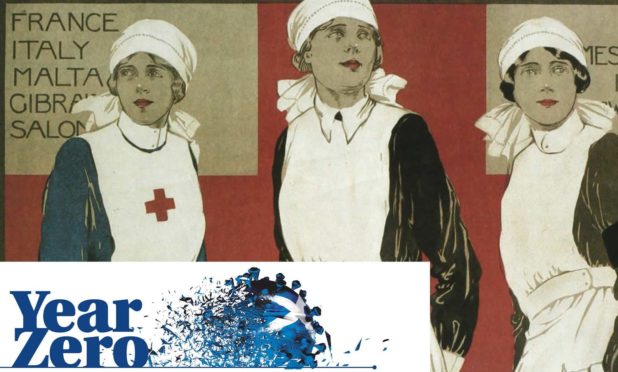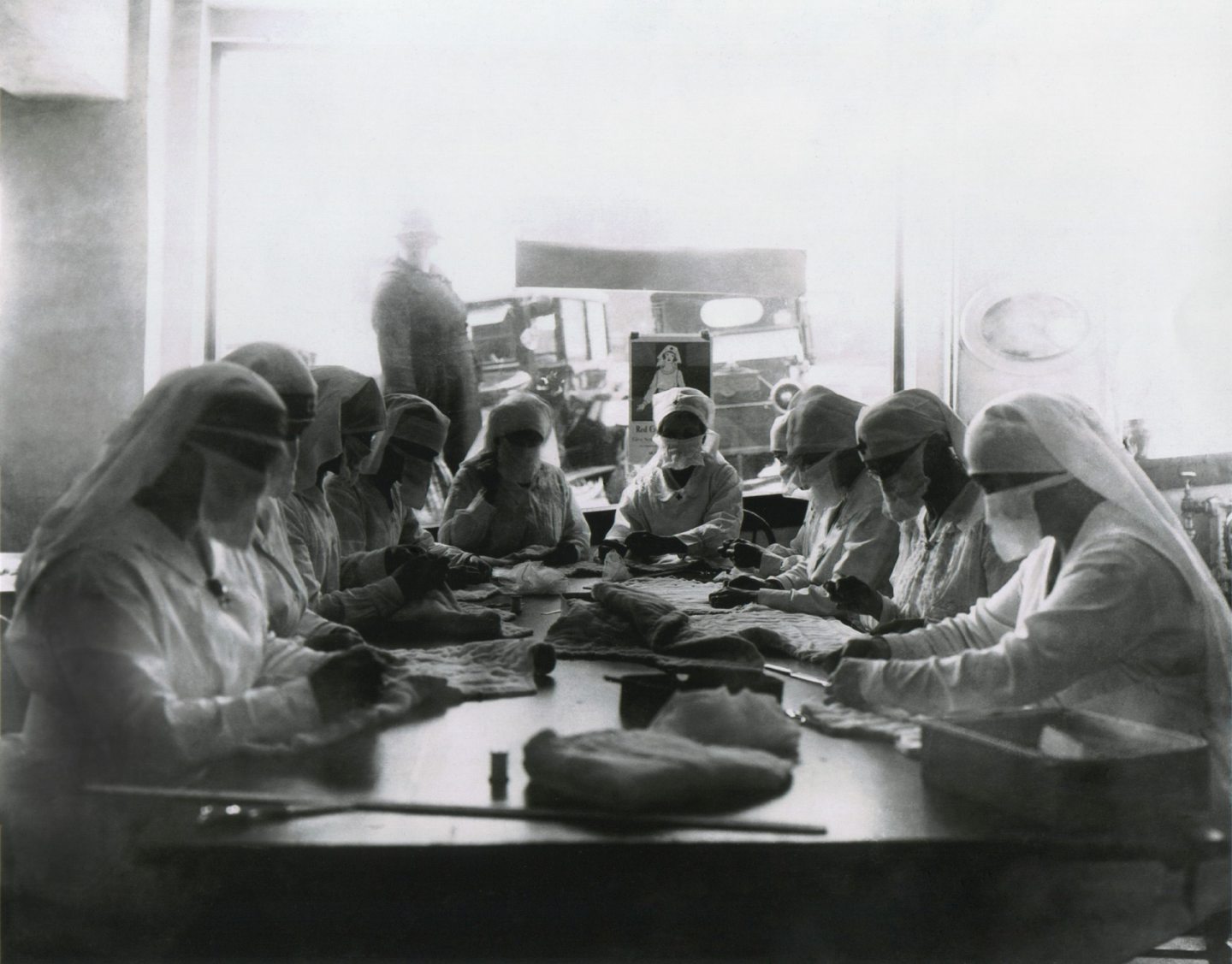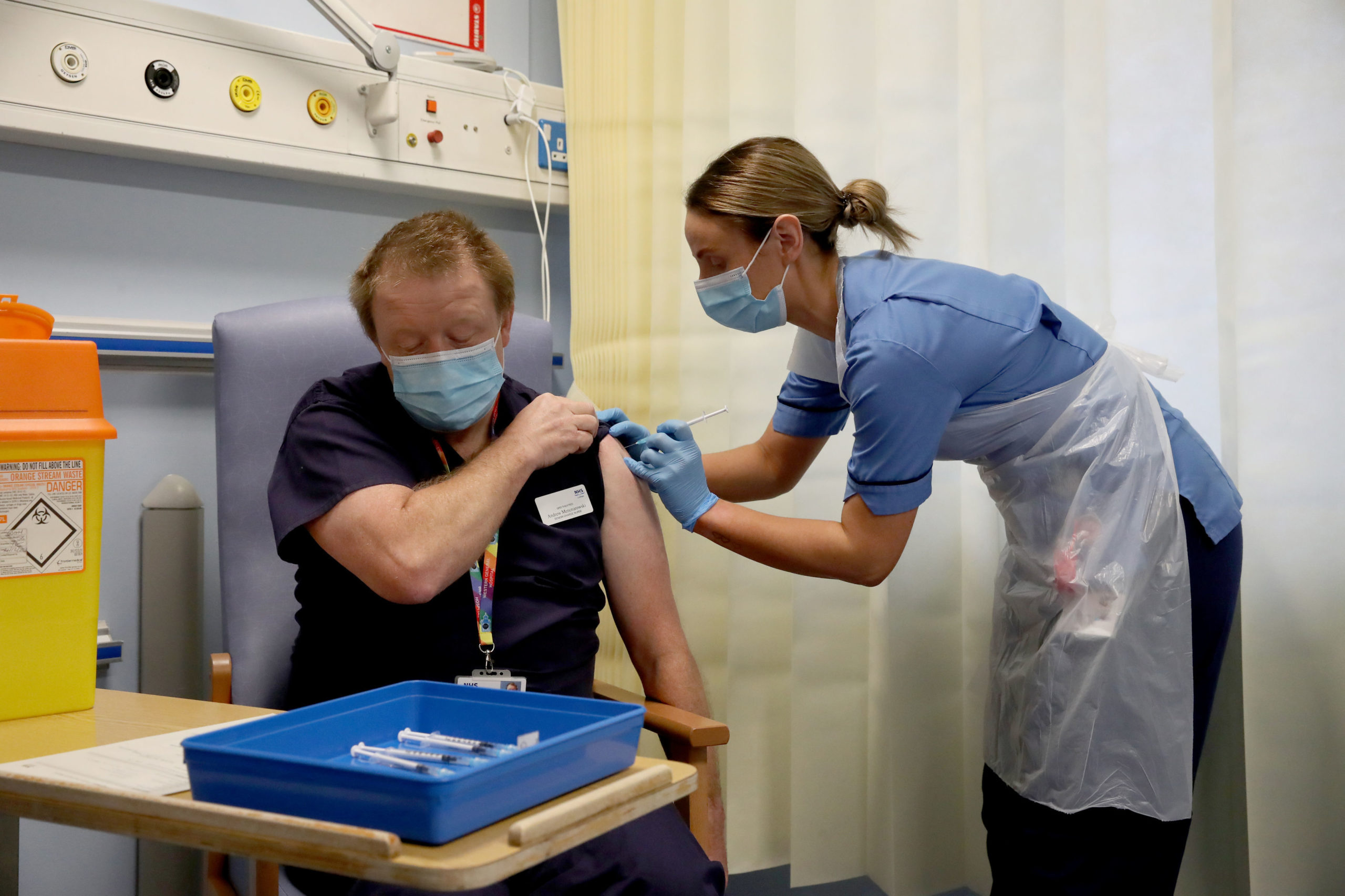
On January 12 last year the World Health Organisation confirmed a new coronavirus had caused serious respiratory illnesses in a cluster of people in the city of Wuhan in China.
The transmission rate was fast and death rates from the virus were also unusually high. It was, we now know, the first evidence of what was to become a global pandemic.
Events moved rapidly after the first cases of Covid were verified in Scotland in March. The kind of constraints we have been living with now for nearly a year were hurriedly put in place: non-essential travel was to be avoided; if possible, people should work from home; those showing symptoms of the disease were instructed to self-isolate; soon schools were closed and pubs, cafes and restaurants shut their doors. Lockdown became the new normal and it still is.
During the summer months Covid seemed to recede as infection and death rates fell. Tragically, that was to be a false dawn. The grim reaper returned with a vengeance in autumn and the harvest of death grew ever greater in the winter months that followed. Fresh mutations of the disease then presented even more formidable challenges to government, health services and scientists.
Not since the two great wars of the 20th Century had humanity faced such a global threat. And the risks were not simply to physical and mental health but to the economy, employment, living standards and social life. In Scotland, for instance, the government’s chief economist estimated the gross national product of the nation was likely to fall by as much as one-third, an outcome never experienced before in the lifetimes of the present inhabitants of the country.
Despite all that, Covid has not yet become the deadliest pandemic of the last 100 years. That dubious honour goes to the influenza pandemic of 1918-20 which infected about 500 million people, or one-third of the population of the world at the time. The most recent research suggests that deadly flu strain could have killed as many as 100 million globally. To place that pandemic in a Scottish context – nearly a million Scots, close to a quarter of the national population at the time, were infected. A total of 70,000 deaths is not thought to be an unreasonable figure overall. In contrast, in 2021, confirmed Covid infections to date number 180,533 and recorded deaths stand at 6,112.
Yet, despite the huge scale of the pandemic a century ago, it seems to have quickly vanished from human consciousness afterwards and eventually from public memory as well. This article seeks to recover that forgotten story and, where appropriate, draw comparisons with the current crisis.
The deadly variant of the flu virus was first confirmed in army training camps in Kansas, USA, in the spring of 1918. As today, inter-country travel was a fundamental factor in transmission and dissemination of the disease. In 1918 many thousands of troops were on the move by rail and ship in the latter stages of the Great War. American soldiers in very large numbers crossed the Atlantic, often bringing the virus with them into France and beyond. In the event, more US soldiers died from the 1918 flu than were killed in battle.
Army barracks throughout the UK and Europe became hot spots. One massive British army camp at Etaples in France, through which 100,000 men passed through every day, was a major source of influenza transmission. The severely ill were sent on crowded trains to packed field hospitals, which were ideally suited to an even greater spread of the respiratory virus. Soldiers on leave carried it with them to their unsuspecting families at home. In a matter of months the deadly strain of influenza had spread across the length and breadth of the UK.
The impact came in four great waves over the following 18 months. There was little or no immunity from it as the disease crossed oceans and continents as a result of inter-human contact. The second wave was the deadliest of all. It took place in the winter months and, as we know to our cost today, some viruses thrive in very cold and wet weather.
Mortality figures in 1918-19 closely followed severe falls in temperature and increases in rainfall. The majority of deaths were caused by bacterial pneumonia, a common secondary infection associated with influenza. One recent medical analysis of the pandemic concluded: “When an influenza virus takes hold in a new host it replicates and destroys cells. The host responds by initiating an immune response. In the case of a new strain the body will not recognise the virus and reacts by generating an exaggerated immune response, known as a cytokine storm…victims end up literally drowning in their own secretions, unable to breath as their lungs become awash with inflammatory fluids.”
As the wave of infections intensified the pandemic took a heavy toll. Entire families were wiped out leaving countless widows and orphans in its wake. In many cities, hospitals were overwhelmed by the sudden massive rise in numbers of the very sick. Undertakers could no longer cope as corpses delivered to their premises multiplied inexorably. Mass graves had to be hurriedly dug to provide anonymous last resting places for the dead.
People were virtually defenceless. Antiviral drugs did not exist nor did antibiotics to treat secondary but potentially lethal bacterial infections.
In 2020-21 Covid has claimed many victims and left large numbers of grief-stricken families behind. But in the perspective of history, the world has not suffered to anything like the same extent as our forebears during the last pandemic a century ago. We have benefited hugely from the developments in medical science and more effective health care systems over the last 50 years or so, even before the remarkably speedy discovery of successful anti-Covid vaccines in the last few months.
With no convincing explanations available to why normal and predictable winter influenza epidemics had become lethal, theories and rumours about its origins soon flourished. There was a belief, for instance, that the years of mass killing in Flanders were among the root causes. It was alleged that noxious fumes had risen upwards from the rotting cadavers of the thousands killed in battle. Others claimed the widespread and increasing deployment of gas by both sides poisoned the atmosphere above the trenches, which was then borne by wind to other places far from the fields of conflict. Others blamed the German enemy either for poisoning aspirin supplies or releasing poison gas from U-Boats along the British coast.
Yet, despite ignorance of causes and the absence of effective remedies, our ancestors did try to fight hard against the virus. Aspirin had first been patented in 1897 and became the most common medication in the crisis, though it only alleviated symptoms and could not provide a cure. Some medical professionals advised up to 30 grammes a day could be taken, a dose now known to be toxic. Aspirin poisoning, therefore, caused or hastened many deaths.
But precautions now very familiar to us were also introduced and would have been more effective in controlling transmissions than so-called medical “remedies” of the day. These included the use of masks (strongly recommended by the Red Cross), social distancing, closing schools and places of worship, entertainment venues and the banning of large gatherings.
Few were protected from the pandemic but some suffered more than others. Unlike 2020-21 the pandemic of yesteryear mostly killed young adults aged between 20 and 40. More men than women fell victim to the virus as they were more likely to leave the home for work and mix with others. Globally, the most likely of all to die and most vulnerable to infection were pregnant women.
The populations of Africa and Asia were hit much harder than those of Europe and America. Even the unborn did not escaped unscathed. Modern research shows that after birth those in the womb during the pandemic could be affected by reduced educational attainment and higher risk of physical disabilities.
In Scotland the virus first entered via the Clyde ports, as the first points of connection to transatlantic shipping lines and spread across the country. The Edinburgh Medical Journal said in 1919: “Not only does this epidemic of influenza tower over all recorded epidemics of a similar nature: it proved the most fatal epidemic disease of any form that has occurred in Scotland since death registration began.”
The tenements of Scottish cities, especially Glasgow and Dundee, were notoriously more overcrowded than the UK average. Many families in these dwellings were also mired in poverty. They were fruitful breeding grounds for rapid transmission of the disease.
It is now thought 70,000 died in Scotland, though nine out of 10 of those infected did eventually recover. To those who fell victim to the disease there had to be added to the many thousands of young men killed in combat on the Western Front and other military operations in the war to end all wars.
During the Covid pandemic, the national and international media have gone into overdrive. Newspapers, radio and television provide 24-hour news coverage of infection rates, mortality figures and changing government policies of control and protection. It was different a century ago.
The influenza pandemic came to be known as the “Spanish flu”. This was not because it originated in Spain. Rather, Spain, as a neutral nation during the Great War, had no censorship of the press. The pandemic was reported freely and so first came to public attention across the world from Spanish sources. Elsewhere in Europe and the USA the information of spread was suppressed. There seems to have been a tacit agreement between governments and newspapers to keep the information from the public.
Morale after four years of a terrible war was already at a low ebb so governments feared news of a killer thriving among civilian populations might trigger mass panic. In the archives of Scotland’s newspapers in 1918 and the following year, all the great events in the final stages of the war were recorded in full detail but information on the pandemic was virtually absent. In one edition of The Scotsman in September 1919, a summary of deaths from influenza was published with little comment on the back page beside a column headed “Scarcity of Whisky”.
The blackout of news during the war was one reason for the development of collective amnesia about the influenza pandemic. Another was the dreadful mortality rates experienced in the battles of the Great War. Those who died a heroic death fighting for King and Country were remembered, commemorated and eulogised. Only a few years after the peace, war memorials in Scotland were built in large numbers, even in the smallest hamlets of the country, to honour the Glorious Dead.
In the Roll of Honour in the Scottish National War Memorial at Edinburgh Castle, 134,112 names of the fallen of 1914-18 are recorded, many more than the dead of the influenza pandemic. There is no memorial to them. Remembered only by their families at the time, their fate was soon lost to history.
Sir Tom Devine is Professor Emeritus of Scottish History at the University of Edinburgh

Enjoy the convenience of having The Sunday Post delivered as a digital ePaper straight to your smartphone, tablet or computer.
Subscribe for only £5.49 a month and enjoy all the benefits of the printed paper as a digital replica.
Subscribe © Everett/Shutterstock
© Everett/Shutterstock © Jane Barlow / PA
© Jane Barlow / PA




 © Andrew Milligan / PA
© Andrew Milligan / PA